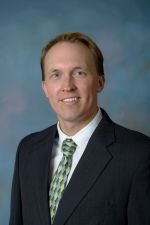Executive Summary
If you’ve decided that you are willing to accept the burden, the issue becomes how do you prevent something like what happened at Wealth Management LLC happening to you? If upholding a fiduciary duty is not enough, what will it take to properly respect the burden? I don’t think I have the answer, but I will suggest a place to start:
“Primum non nocere - First, Do No Harm”
(Editor's Note: This post is a continuation of Nathan's prior "The Burden We Bear".)
One of the principal precepts of medical ethics: first, do no harm. Basically, this means that for every action considered the possible harm from that action must first be considered. Does the risk of treatment outweigh the benefit?
In my opinion, this was the missing piece at Wealth Management LLC. The fiduciary culture was tremendously strong. The strategies used were researched and believed to be in a client’s best interest. I believe the theories made sense, at least as they were explained to me. But, as we now know, they ultimately destroyed peoples’ financial lives.
Had our first duty been to do no harm, things might have looked different at Wealth Management LLC. What ultimately caused the deepest impact on Wealth Management clients, in my opinion, was the use of investment strategies that theoretically made sense but had not been tested in the real world. The risks of the investment style were not properly understood.
First, Do No Harm would change the way the financial planning and investment advice professions function. In addition to borrowing the precept from the medical field, other elements of medicine would find their way into financial planning practice.
Chief among these elements would be the concept of the research trial. Innovation and new strategies would require rigorous research and peer review before becoming allowable for use with general client populations.
Research Trials
This single element would drastically alter the professional landscape. Most importantly, it would serve the “do no harm” precept very well. This would occur because, instead of firms trying to differentiate by using bleeding edge theory for clients, firms would have to use the same researched strategies where the risks were very well understood.
At Wealth Management LLC, for example, the private placement funds would not have been allowed for immediate general client use. Instead, the investment theories to be employed would first have had to undergo peer-reviewed research trials that either confirmed or denied the strategies. In addition, the peer-review would determine whether the risks of the strategies were being properly understood and disclosed.
Only after this peer-review process, would the funds employing these theories be allowable for client use.
This type of research trial and peer-review process could extend beyond investment ideas. Financial planning theory, tax strategies, insurance products and others would undergo the same rigorous testing before becoming available for client use.
Would this eliminate all risk that clients could be dramatically harmed? Certainly not, but it may be one step toward preventing future Wealth Management LLC’s. It may even be able to prevent a few outright fraudulent schemes from occurring.
The real question becomes, is this practicable in the real world? I don’t know that it is without major disruption to the way the financial planning and investment advice worlds function. I don’t think practices would have incentive to pursue a drastic measure like this because it might take away a competitive edge they believe they have. I do think there is a more palatable alternative, although likely not as effective.
Plain Vanilla
The alternative to the research trial is to stick with plain vanilla strategies and processes when working with clients. Use tried and true theory, and give up the innovative ideas where the potential risk is not properly understood. Recognize that we hold our clients’ financial lives in our hands and we need to understand the impact of our recommendations. The only way this happens is by sticking to what we understand and staying away from what we believe.
Under a First, Do No Harm standard of care, using untested and lightly researched ideas and theories simply cannot stand. Where the potential harm is unknown, there can be no justification that reasonably argues the duty is being upheld. A measured and fact-based analysis cannot be made.
Plain vanilla does not protect clients from potential loss, but it does allow planners and clients to understand the potential harm relative to potential benefit.
Moving Forward
It took me a great deal of time to come to grips with having been involved in any way with the harm caused by Wealth Management LLC. I nearly gave up on the financial planning profession and questioned if financial planning actually had true value. I wondered if the benefits financial planning and investment advice offered outweighed the potential harm that could come to clients.
I did eventually move forward and recognized that financial planning could be worth the potential risks. But I also realized there was a great deal I learned through the Wealth Management LLC experience that needed to be offered to other planners. I believe that through the harm that has come to former clients and the struggles employees encountered, I now carry a responsibility to share these lessons with others. My experiences can help shape a better profession. By sharing my thoughts on this lesson, I am accepting the responsibility to tell the story.
Never forget, you carry a tremendous burden when you sit in front of a client and ask them to trust you. And when you do that remember to first, do no harm.




